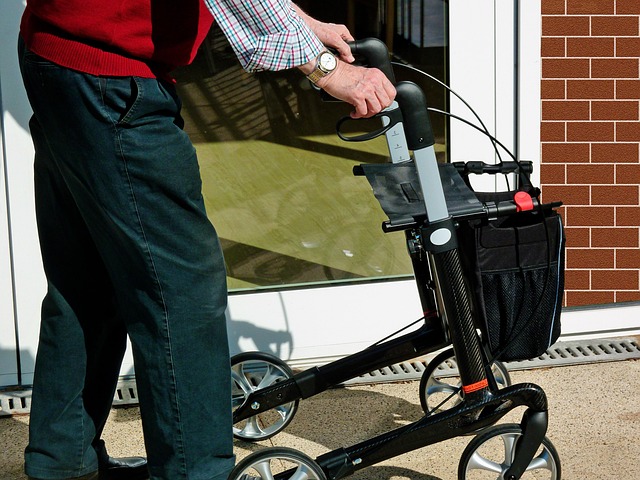Securing Affordable 2-Bedroom Senior Housing That Doesn’t Compromise on Comfort
Finding senior housing that’s both affordable and truly livable doesn’t have to feel impossible. This guide walks you through practical steps to secure a 2-bedroom apartment that fits your budget without sacrificing safety, space, or quality of life. Learn how to build a smart monthly plan, use financial assistance programs, and leverage online tools to compare senior living options. With a thoughtful approach, you can find the right balance between cost and comfort — and settle into a space that feels like home

What factors should seniors consider when seeking affordable housing?
When searching for affordable senior housing, it’s crucial to evaluate several key factors. Location is paramount – consider proximity to healthcare facilities, public transportation, and social activities. Safety features like secure entrances, well-lit common areas, and emergency call systems are essential. Additionally, look for communities that offer maintenance services, as this can significantly reduce unexpected costs and physical strain on residents.
Accessibility is another critical aspect. Ensure the apartment and common areas are designed with seniors in mind, featuring wider doorways, grab bars in bathrooms, and elevators if the building has multiple floors. These features not only enhance comfort but also promote long-term independence.
How can seniors budget effectively for 2-bedroom apartment living?
Budgeting for senior living requires a comprehensive approach. Start by listing all sources of income, including Social Security benefits, pensions, and investment returns. Next, outline monthly expenses, categorizing them as essential (housing, utilities, food, healthcare) and discretionary (entertainment, travel).
A general rule of thumb is to allocate no more than 30% of your monthly income towards housing costs. This includes rent, utilities, and any community fees. By sticking to this guideline, you’ll ensure that housing remains affordable while leaving room for other necessary expenses and savings.
Consider setting up automatic bill payments to avoid late fees and simplify financial management. Many senior living communities offer bundled services, which can help streamline budgeting and potentially reduce overall costs.
What housing assistance programs are available for older adults?
Several programs exist to help seniors secure affordable housing. The U.S. Department of Housing and Urban Development (HUD) offers various options:
-
Section 202 Supportive Housing for the Elderly Program: Provides rental assistance and supportive services for very low-income seniors.
-
Housing Choice Voucher Program (Section 8): Offers rental assistance to low-income individuals, including seniors, in the private market.
-
Low-Income Housing Tax Credit (LIHTC) Properties: Provides tax incentives to developers who build affordable housing, including units for seniors.
Additionally, some states and local communities offer their own senior housing assistance programs. These may include property tax relief, home modification grants, or rental subsidies specifically for older adults.
How can seniors compare amenities in different apartment communities?
When comparing senior apartment amenities, create a checklist of features that are most important to you. Common amenities to consider include:
-
On-site laundry facilities or in-unit washer/dryer
-
Community spaces for socializing
-
Fitness centers or exercise classes
-
Transportation services
-
Meal plans or communal dining options
-
Housekeeping services
-
Pet-friendly policies
-
Security features
Prioritize these amenities based on your lifestyle and needs. Some communities may offer a robust activity calendar, while others focus on providing more comprehensive healthcare services. Consider which features will contribute most to your quality of life and overall well-being.
What unique considerations apply to 2-bedroom apartments for seniors?
Two-bedroom apartments offer several advantages for seniors. The extra space can accommodate visiting family members, serve as a home office, or provide room for hobbies and storage. This layout is particularly beneficial for seniors who require live-in caregivers or those who enjoy entertaining guests.
When evaluating 2-bedroom options, pay attention to the overall floor plan. Look for open layouts that minimize trip hazards and allow for easy mobility. Consider the placement of bathrooms – having one adjacent to the master bedroom can be especially convenient for nighttime use.
Additionally, assess the natural light and ventilation in both bedrooms. Adequate lighting can improve mood and reduce the risk of falls, while proper ventilation contributes to overall health and comfort.
How do costs compare among different senior living options?
When considering senior living options, it’s essential to compare costs across various types of communities and locations. Here’s a breakdown of average monthly costs for different senior housing options in the United States:
| Housing Type | Average Monthly Cost | Typical Amenities Included |
|---|---|---|
| Independent Living | $2,500 - $4,000 | Meals, housekeeping, activities |
| Assisted Living | $3,500 - $6,000 | Personal care, meals, medication management |
| Memory Care | $5,000 - $8,000 | Specialized care, secured environment |
| Continuing Care Retirement Community | $3,000 - $5,000 (plus entry fee) | Tiered care levels, extensive amenities |
| Affordable Senior Apartments (Subsidized) | $400 - $1,200 | Basic amenities, some supportive services |
Prices, rates, or cost estimates mentioned in this article are based on the latest available information but may change over time. Independent research is advised before making financial decisions.
In conclusion, securing affordable 2-bedroom senior housing that doesn’t compromise on comfort requires careful planning and research. By understanding available assistance programs, comparing amenities, and budgeting effectively, seniors can find housing solutions that meet both their financial and lifestyle needs. Remember to visit potential communities, speak with current residents, and consider future care needs when making this important decision.




